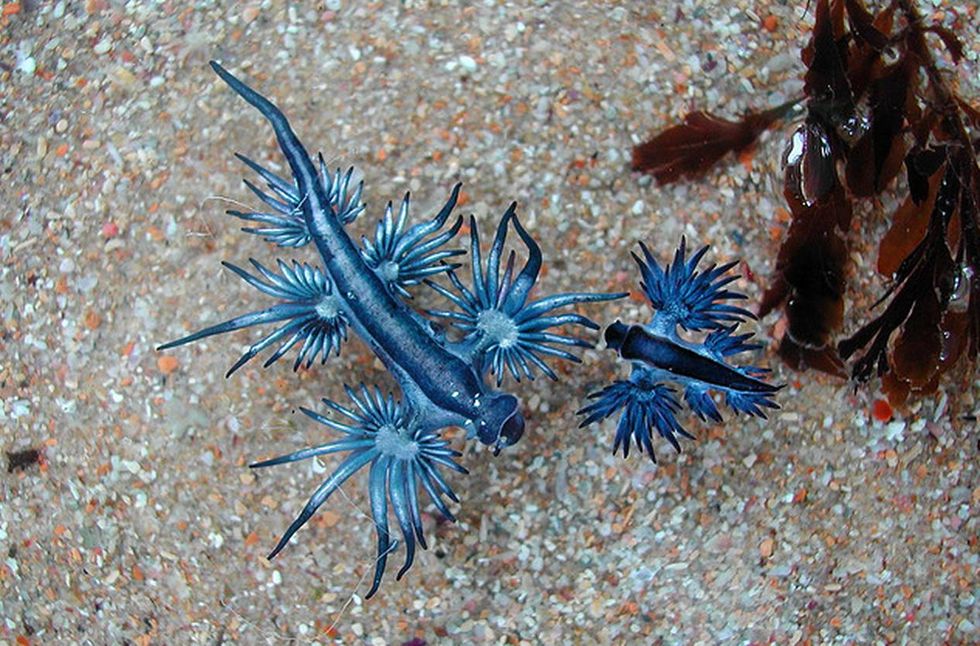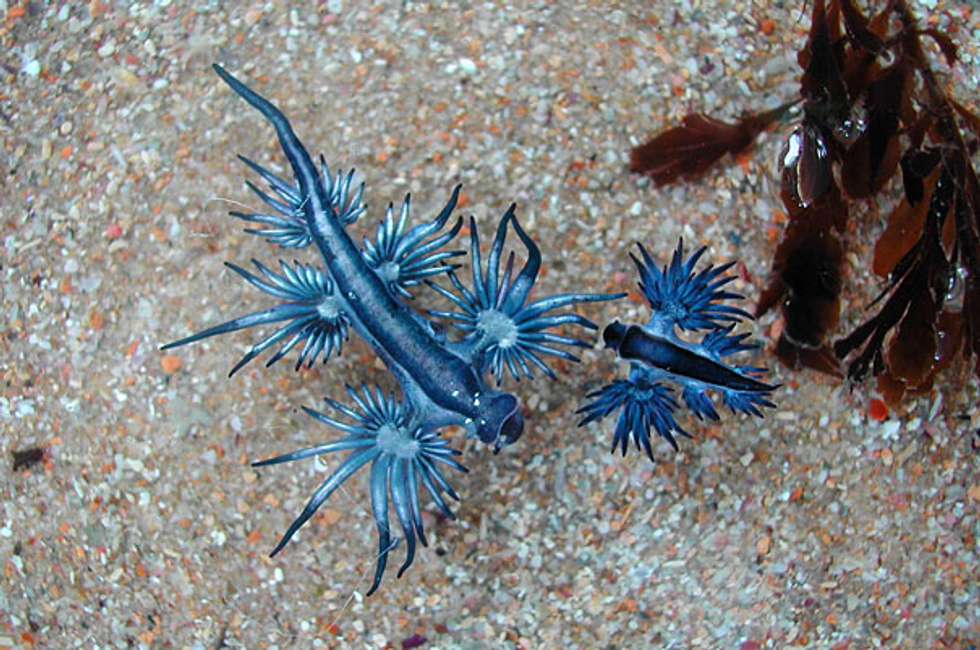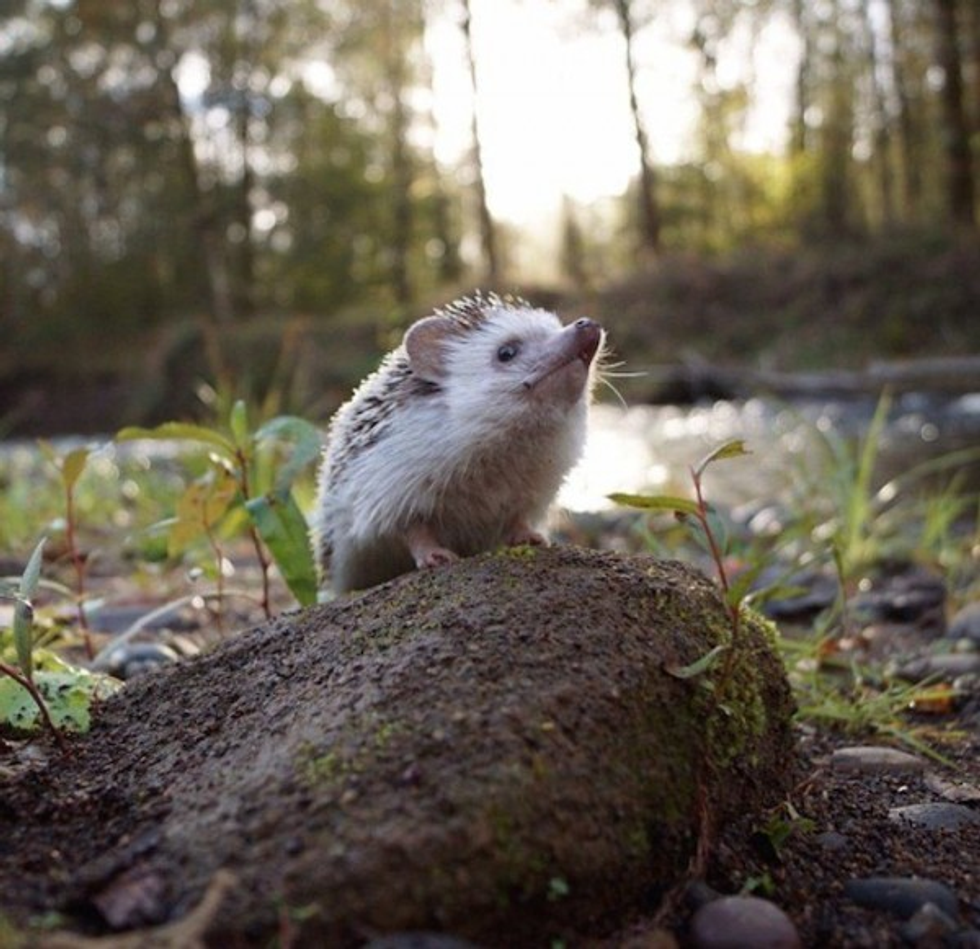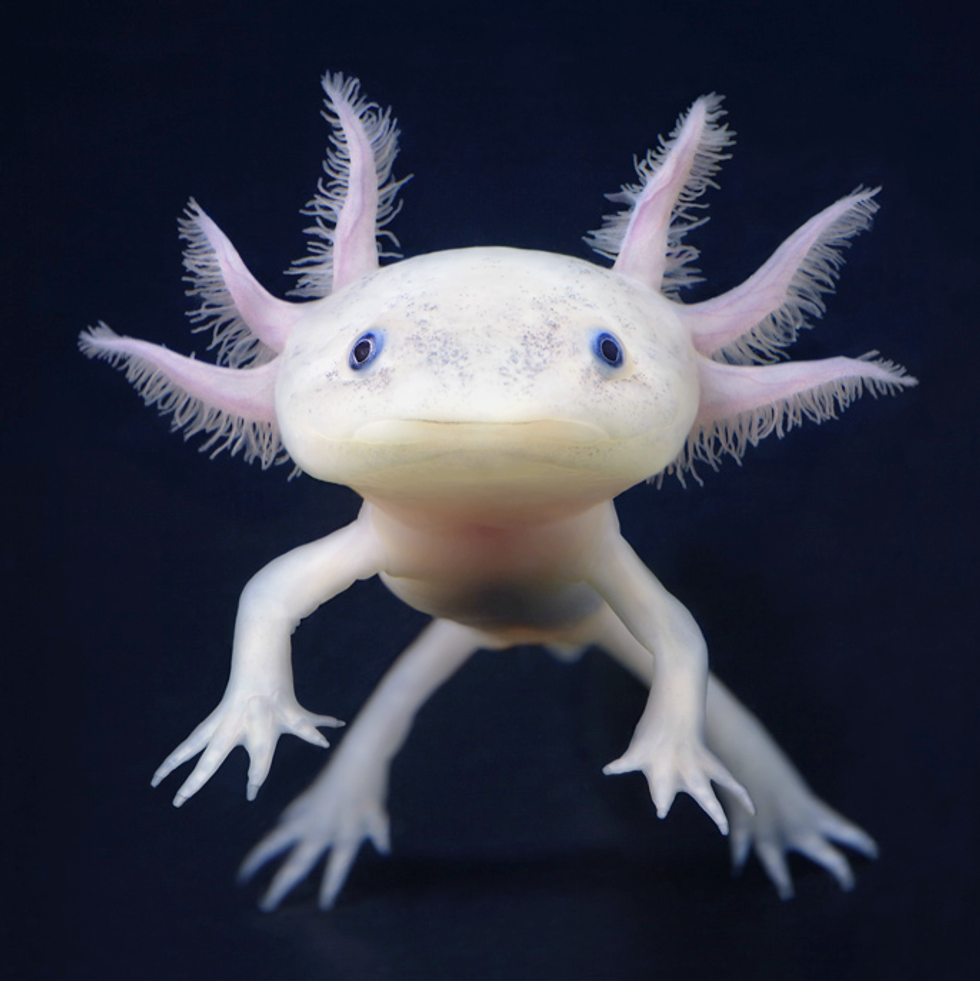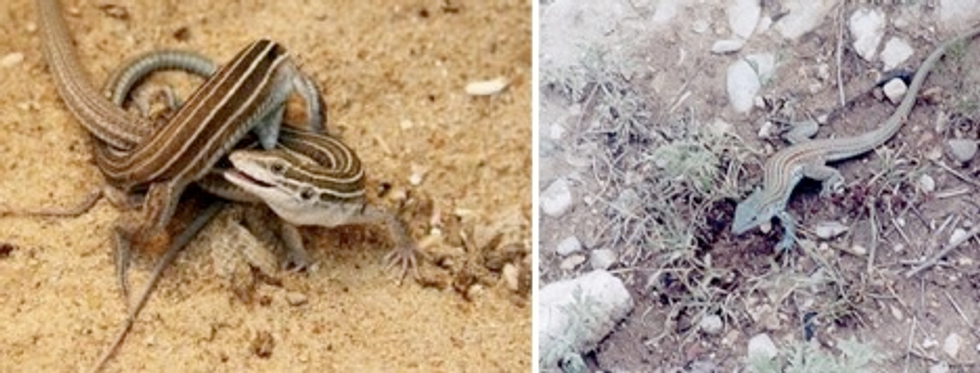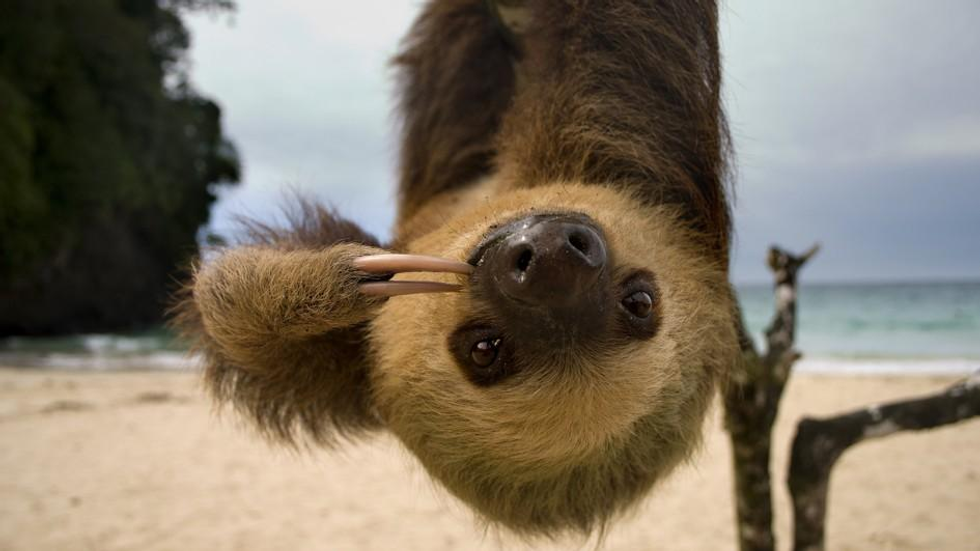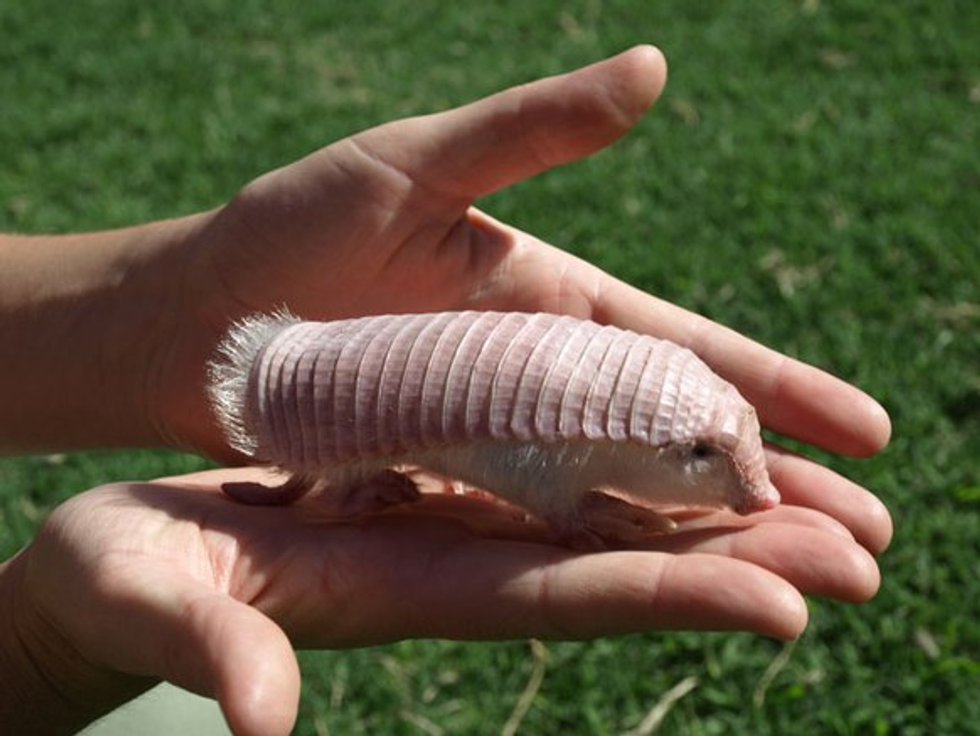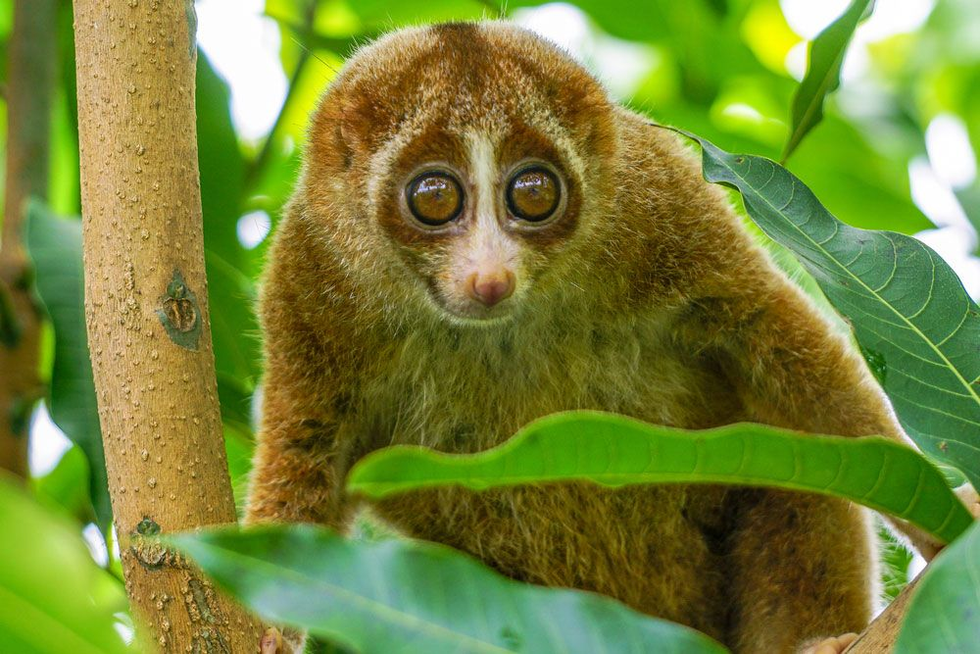1. Blue Dragon Mollusk
More commonly referred to as a sea slug, this soft bodied beauty is actually very poisonous. They grow to about 1 ½ inches in length and often feed on much bigger creatures after paralyzing them with their sting.
2. Hedgehog
Having owned a hedgehog I can attest that they are wonderful (and peculiar) little guys. Most household hedgehogs originate from Africa. Often misattributed as “quills”, the hedgehog's spikes are actually called spines and cannot be ejected from the body like porcupines.
Also referred to as Mexican Salamanders, these smiling little amphibians are able to regenerate limbs. The word “Axolotl” comes from the ancient Aztecs and translates to “water- dog”.
4. The Leaping Lesbian Lizard (Cnemidophorus uniparens)
Very interestingly, this species of lizard is all female, and the official state reptile of New Mexico. The lizards are classified as parthenogenetic as they are able to reproduce asexually. Despite being an all female population they display sexual tendencies that exist in other groups of lizards.
5. Sloth
The sloth is identified in two types: the three-toed sloth and the two-toed sloth. They sleep up to 20 hours daily and algae actually grows on their fur. This is partly due to their sedentary lifestyle but also a good defense mechanism as it allows them to blend into their environment. Sadly some species of the three toed sloth have recently made the endangered species list.
6. Pink Fairy Armadillo
These little ones weigh in at a quarter pound and spend most of their lives burrowing in their desert environment. Interestingly, They use their tail as a fifth limb to make their way underground and have difficulty walking on solid land. Because of habitat destruction, these whimsical creatures are going extinct.
7. Slow Loris
The Slow Loris has recently became the star of several viral videos online, but they might not be as happy as they appear. Though cute and cuddly looking, the Slow Loris is actually venomous and can cause anaphylactic shock if threatened. Sadly, they too are becoming endangered and have suffered major destruction to their population due to illegal pet-trade.
As mentioned above several of these animals are endangered. If you wish to help out I suggest reaching out to your local and even federal government officials. With the right legislation, protecting these animals natural habitats many of them can be saved.

